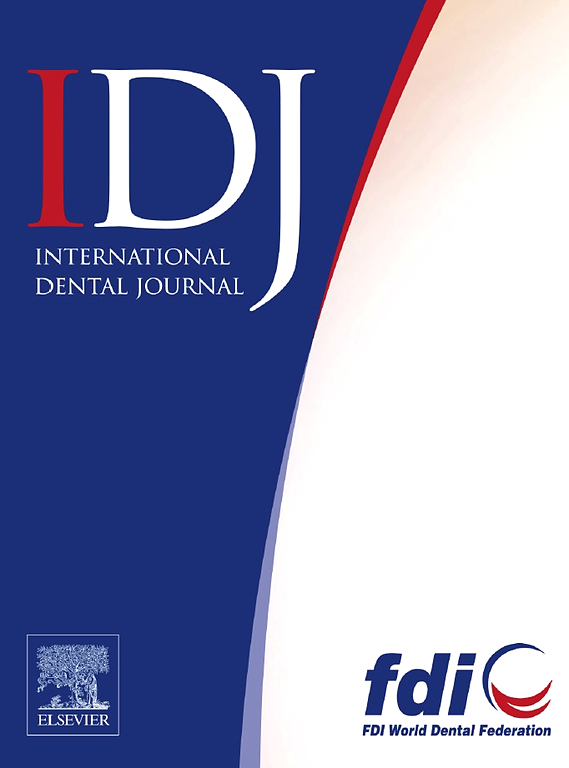Effect of Chewing Hardness on Cognitive-Associated Brain Regions Activation
IF 3.2
3区 医学
Q1 DENTISTRY, ORAL SURGERY & MEDICINE
引用次数: 0
Abstract
Introduction and aims
Recent findings suggest a potential correlation between mastication and cognitive processes. However, the comprehensive investigation into the neurobiological mechanisms of masticatory control, such as the impact of chewing hardness, on cognitive function, remains incomplete. This study aims to investigate the impact of chewing hardness, as an aspect of masticatory control, on cognitive function by examining brain activation patterns during hard and soft chewing conditions.
Methods
A total of 52 healthy young adults (average age of 21.81 years; 24 men and 28 women) underwent fMRI scanning, during which 27 individuals chewed soft and 25 individual chewed hard material. The functional magnetic resonance imaging (fMRI) was employed to elucidate the overlapping and distinct patterns of activated brain regions associated with soft- and hard-chewing conditions. Subsequently, correlations between these activated brain regions and neuropsychological measures were assessed.
Results
Conjunction analysis revealed that both soft- and hard-chewing conditions stimulated brain regions directly associated with orofacial movement and spatial information processing. Two-sample t-test result indicated that the hard-chewing group had higher activation mostly in the caudate nucleus and frontal brain regions associated with cognitive function compared with the soft-chewing group. Furthermore, the activation strength of these brain regions positively correlated with neuropsychological measures.
Conclusion
The findings suggest that hard-chewing may be more effective than soft-chewing in stimulating cognition-associated brain regions, potentially enhancing cognitive processing.
Clinical relevance
Our study shows that hard-chewing activates brain regions linked to cognitive function more than soft-chewing. This suggests that harder chewing could be used as a simple, non-invasive method to enhance cognitive processing. Incorporating harder foods into the diet may offer a practical approach to support cognitive health and improve mental performance.
咀嚼硬度对认知相关脑区激活的影响
最近的研究表明,咀嚼和认知过程之间存在潜在的相关性。然而,对咀嚼控制的神经生物学机制的全面研究,如咀嚼硬度对认知功能的影响,仍然不完整。本研究旨在研究咀嚼硬度作为咀嚼控制的一个方面,通过检查大脑在硬咀嚼和软咀嚼条件下的激活模式,对认知功能的影响。方法52例健康青年(平均年龄21.81岁;24名男性和28名女性)接受了fMRI扫描,在此期间,27人咀嚼软质食物,25人咀嚼硬质食物。应用功能磁共振成像(fMRI)研究了与软性和硬性咀嚼相关的脑激活区域的重叠和不同模式。随后,评估了这些激活的大脑区域与神经心理学测量之间的相关性。结果联合分析显示,软性咀嚼和硬性咀嚼均刺激与口面部运动和空间信息处理直接相关的脑区。双样本t检验结果表明,硬咀嚼组与软咀嚼组相比,主要在尾状核和与认知功能相关的额叶脑区激活更高。此外,这些大脑区域的激活强度与神经心理学测量呈正相关。结论硬咀嚼可能比软咀嚼更有效地刺激认知相关的大脑区域,潜在地增强认知加工。临床相关性我们的研究表明,硬咀嚼比软咀嚼更能激活与认知功能相关的大脑区域。这表明,更用力的咀嚼可以作为一种简单的、非侵入性的方法来增强认知处理。在饮食中加入较硬的食物可能是一种支持认知健康和改善精神表现的实用方法。
本文章由计算机程序翻译,如有差异,请以英文原文为准。
求助全文
约1分钟内获得全文
求助全文
来源期刊

International dental journal
医学-牙科与口腔外科
CiteScore
4.80
自引率
6.10%
发文量
159
审稿时长
63 days
期刊介绍:
The International Dental Journal features peer-reviewed, scientific articles relevant to international oral health issues, as well as practical, informative articles aimed at clinicians.
 求助内容:
求助内容: 应助结果提醒方式:
应助结果提醒方式:


